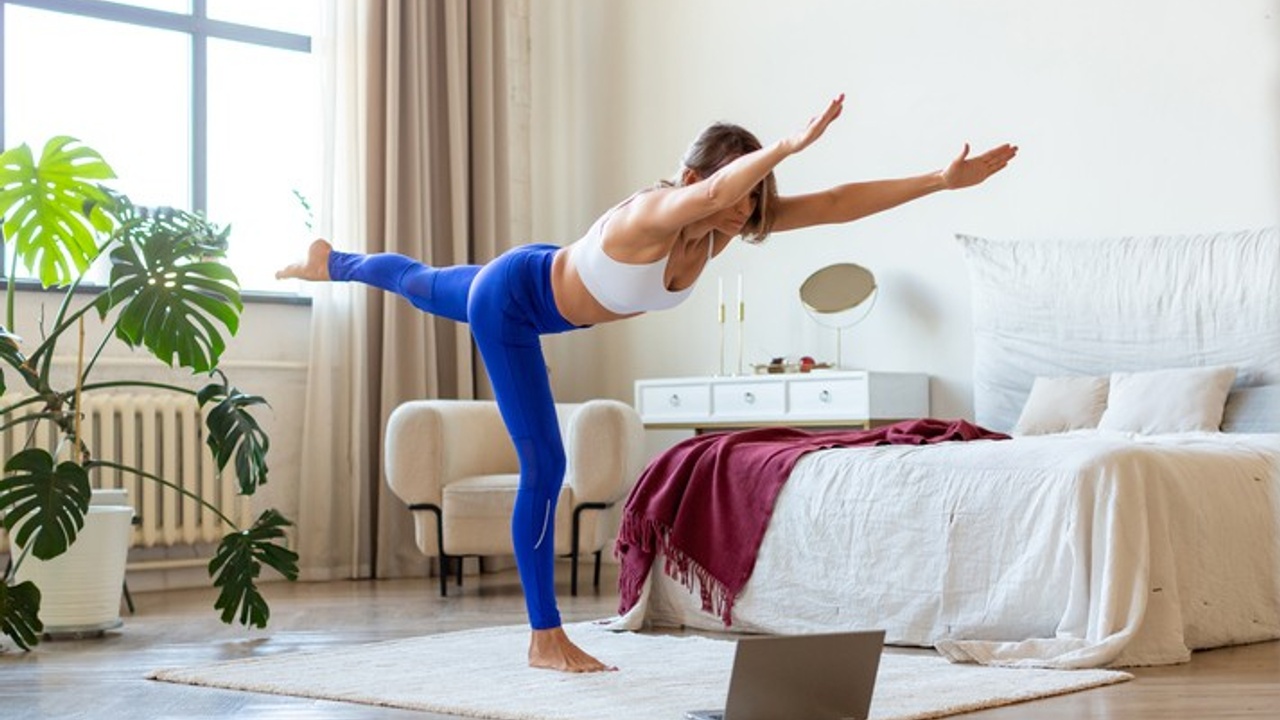Can You Balance On 1 Leg For 10 Secs?
Jun 26, 2022
If you are one of my clients who all include balance in their Pilates training, you can confidently answer "Yes!" to this question. You may have seen the results of a new study that was released this week which revealed that the inability to balance on 1 leg for 10 seconds could be an indicator of serious underlying health conditions. In fact, the inability to do this could lead to premature death within a decade. Several of my clients asked me if I had seen this article while they were going through their balancing paces in their sessions. They were reassured knowing that they had outstanding balancing skills and could balance on 1 leg for way longer than 10 seconds. Many of them can incorporate other more advanced balancing challenges as well. The woman in the picture above is doing a more advanced version of a single leg balance and this is not the more basic task that was given to the study participants. They were asked to place the front of their free foot on the back of the opposite lower leg while they looked straight ahead, arms long by their sides. So let's look at why good balance is so important and learn how we can achieve it too.
Why is Balance Used to Measure Our General Health?
We need to able to stand upright to move efficiently and balance is required to do this. In general the more active we are physically the more likely we are to have good balance. The ability to balance also indicates the central and peripheral nervous systemis are functioning well and we can activate the right muscles when required to hold our posture and balance successfully. As well as being an indicator of poor health, the inability to balance greatly increases the risk of falls which is a major cause of death in older people. So as you can see, good balance is vital.
When Does Balance Start to Decline?
The participants in the study were aged between 51 and 75 years probably because our natural ability to balance starts to decline somewhere between the ages of 40 - 50 years and even earlier for some people. The three systems involved in balance are the visual, proprioceptive and vestibular systems and the information received from these 3 sources helps to keep us balanced. As we age, cells die off in these 3 systems and our balance deteriorates. I'm sure we can all remember challenging our balance as children - walking along fences, climbing up trees and standing on the branches. Most children are fearless when they challenge their balance. If they do fall over they just get up and try again! Falling over in adulthood can have more serious consequences so we become much more cautious about challenging our balance as we age. This is a vicious cycle as the less we challenge our balance the more we lose this valuable, life saving skill.
Which Diseases are Associated with Poor Balance?
According to the study some of the health conditions that people who failed the balancing test were experiencing or had an icreased risk of developing are heart disease, obesity, high blood pressure, type 2 diabetes and cancer. Some of these conditions are lifestyle related so it stands to reason that if you maintain your health and fitness which includes good balance you can reduce your chances of developing these diseases. An exercise method such as Pilates which incorporates balance training is ideal for helping to reduce your chances of contracting these diseases.
Which Other Conditions Cause Poor Balance?
There are many other reasons why a person may experience loss of balance. Some medications have a side effect of causing light-headededness which would impair the ability to balance as do ear infections, vertigo, low blood pressure and neurological disorders. Balance can also be affected by pelvic floor dysfunction and weak core muscles in general. Painful foot conditions can also prevent balancing and the list goes on. It's important to remember there are numerous reasons why someone has poor balance so it's also wise to establish the exact cause and not jump to the most dire conclusions straight away.
Good News! Improve Your Balance At Any Age
While balance deteriorates with age and lack of training, the good news is that it responds very well to consistent training and even more encouraging is that you start to see results quite quickly. I'm passionate about ensuring all my clients have excellent balance and make it a focus in my 1 on 1 Skype sessions. My online Pilates studio JS Mind Body Pilates, which caters to those recovering from pain or injury, also incorporates balance training for all levels and abilities to ensure you maintain this essential skill throughout your life.
If you are ready to take control of your own health and fitness and improve your balance training through Pilates click HERE to read about what options I have to offer you. Alternatively, email me at info@jsmindbodypilates.com - I'd love to help you on your Pilates journey so you can make the most of your retirement years!

